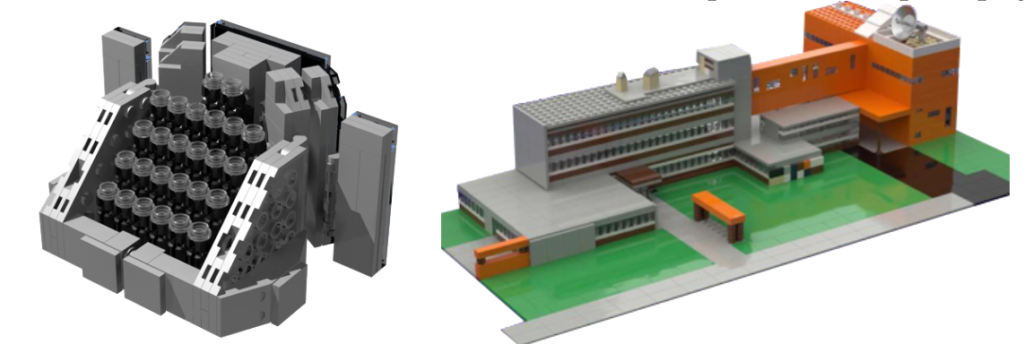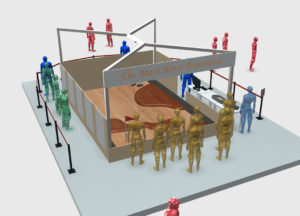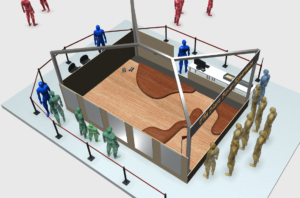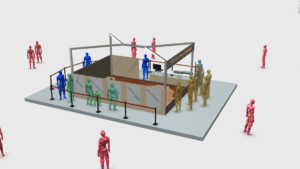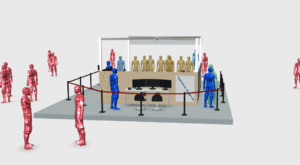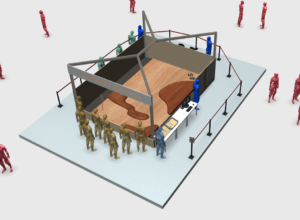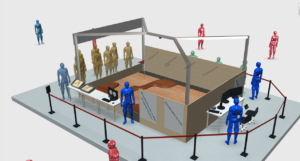Here you will find a list of outreach and education project currently in development. For each outreach project, I craft them keeping in mind a goal of getting high educational value with it, or for it to be available as an educational ressource too.
Confessions of History of Sciences
With Ugo Bimar, creator of the awarded webseries Confessions d’Histoire, I am the Co-PI of the project of pilot episode for the spin-off “Confessions of History of Science”. It would be a total of ~20-minutes video material going from antiquity up to the exoplanets discovery, by fictional interviews of the historical figures and tinted with humour: Aristarchus of Samos, Ptolemy, Giordano Bruno and Kepler (those are leads, final characters are not decided yet) played by comedians. Michel Mayor (Nobel Prize 2019) would play its own role for the modern days along another TBD astronomer. We will collaborate with many astronomers for translation of subtitles in 15+ languages already secured. The project has currently received partial funding from the Europlanet Society and we are looking for additional sources to be able to complete the project. Our goal is to reach over 1 million viewers worldwide. In addition to this prime goal, we aim to get this video to be used by teachers at all level of education in order to introduce their students to some elements of history of science. Many history teachers (including at university level) have already declared using videos of the original Confessions d’Histoire series to bring more impactful material to their class. Full presentation of this project available on demand.
Creation of an influencer program
Influencer marketing is a form of marketing in which the focus is placed on influential people rather than the target market as a whole. It identifies the individuals that have influence over potential buyers, and orients marketing activities around them. The project would be to take the codes of influencer marketing and applied them to science outreach and communication, with a focus on video-makers (Youtubers) specialised in scientific/cultural content, inviting them to visit astronomical research facilities and shoot a video with them there. A special attention will be given to collaborate with women influencers and women scientists to promote women in science, and science interest toward young women. Major differences with TV/news documentaries are the involvement from the community to watch the video content, as well as the format and the codes used in the production. Such video-content produce in the frame of this program can of course be used for educational purpose in the class but also mainly out of it. Indeed, the social-media native generation is very efficient at navigating the online world to find content, YouTube being their most used platform. An Ipsos study even found out that 80% of under 20 years old teens say YouTube has helped them become more knowledgeable about something. With the evolution of learning habits, it is thus important for the international astronomical community to also evolves its educational habits. The collaboration with Ugo Bimar/Confessions d’Histoire is an initial step toward this project.
LEGO European satellites
The goal is to develop multiples LEGO sets (started already) representing various European satellites (PLATO, CHEOPS, etc.). With as less pieces as possible to lower the cost and make it accessible for everyone (Budget aimed : 10 to 20€ per set). Instructions will be available and people can buy all bricks from the LEGO website or second-hand lego website. Maybe: possibility to develop them in partnership with LEGO in the frame of the LEGO Ideas feature. Of course, this project can be adapted to encompass larger astronomy elements than the ESA satellites, and could also feature building or other architectural elements in link to astronomy. Below: Example of concepts for the PLATO satellite and the Geneva Observatory (unfinished). Design and rendering with the Bricklink Studio software.
The Mars Rover Experience
The Mars Rover Experience or MRE is a ~10-minutes immersive outreach and educational experience of the process of a rover mission, from planning phase for the rover landing and pathway, to its control and remote piloting on hostile terrain, and finally the analysis of collected data. The main part consist in driving a RC car set up as a rover, on a replica of a Mars terrain. A particular attention will be made to put the participant in real-like conditions, e.g.: with delays between command and execution of tasks to represent the communication delay between the Earth and Mars. In addition of being a great tool for engaging the public in an entertaining way, it is intended to deliver a very high educational value by packing many elements of a space mission life and of Mars exploration sciences. In order to increase the number of people able to do the full experience, the rover driving is done as a race between two scientific teams. It is complemented by other little experiments such as sand and water to demonstrate gullies formation, etc. This project once completed, will be available as open source material for everyone to build their own version.
- Spectator area
- Top view of the central terrain model, sculpted after CaSSIS dtm.
- Phase 1: the waiting line contains already information on posters regarding instrument building and mission design.
- Phase 2: 2 people race the 2 rovers. Middle screen, top view « satellite » with a webcam, left and right screen are 1st person view from rover.
- Phase 3: experiments, virtual microscope with martian samples, gullies experiments, etc.
- Blue characters are scientists interacting with the public.
Longer term prospects
Those projects are draft ideas and there are no plan to be able to develop them in a near future.
Teaching astronomy in the desert
In design phase: I aim to develop an educational project to visit Developing/Least Developed Countries with astronomers, visiting multiple “towns”/villages, in order to deliver inspirational talks and activities to kids who might not have access to astronomy education on a regular basis, while having some of the best sky conditions for stargazing. If possible, it would be coupled with charity and humanitarian missions in the target area (delivery of school equipment, etc.). The first envisioned countries where Morocco and Tunisia to overcome the barrier of the language. I’m also now in contact with a newly formed start-up aiming at bringing soft skills education in Bangladesh, making this country another potential target. Arid desert areas of Namibia would also be perfect place to put this in place.
Citizen science and school project – miniature DIY radio-telescope
The idea is to develop a radio-telescope for a low cost (100 to 200€ ideally), in a Do It Yourself approach from off-the-shelf components, so that the general public, amateur astronomy clubs and schools can build their own and use it for science independently. But also, their would be possibility to combine them on a national/continental scale, potentially thanks to interferometry. This is only an idea for now, and it needs additional research on the electronic suitable for such project and the subsequent science that can be probed. Indeed, in order to do the interferometry, good clocks are needed as well as a fast enough electronic in order to resolve the waves with the measurements sampling. No feasibility study conducted yet.
